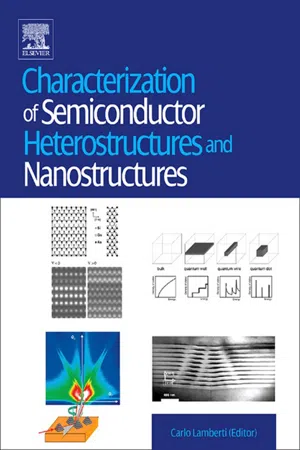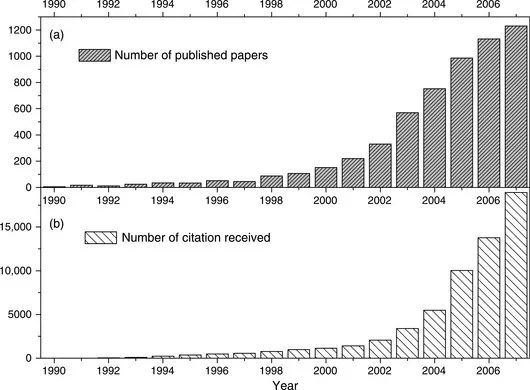
Characterization of Semiconductor Heterostructures and Nanostructures
- 496 pages
- English
- ePUB (mobile friendly)
- Available on iOS & Android
Characterization of Semiconductor Heterostructures and Nanostructures
About This Book
In the last couple of decades, high-performance electronic and optoelectronic devices based on semiconductor heterostructures have been required to obtain increasingly strict and well-defined performances, needing a detailed control, at the atomic level, of the structural composition of the buried interfaces. This goal has been achieved by an improvement of the epitaxial growth techniques and by the parallel use of increasingly sophisticated characterization techniques and of refined theoretical models based on ab initio approaches. This book deals with description of both characterization techniques and theoretical models needed to understand and predict the structural and electronic properties of semiconductor heterostructures and nanostructures.
- Comprehensive collection of the most powerful characterization techniques for semiconductor heterostructures and nanostructures
- Most of the chapters are authored by scientists that are among the top 10 worldwide in publication ranking of the specific field
- Each chapter starts with a didactic introduction on the technique
- The second part of each chapter deals with a selection of top examples highlighting the power of the specific technique to analyze the properties of semiconductors
Frequently asked questions
Information
1 The scientific and editorial blow up of nanotechnology in the new millennium


Table of contents
- Cover image
- Title page
- Table of Contents
- Copyright
- Dedication
- Preface
- Chapter 1: Introduction: the interdisciplinary nature of nanotechnology and its need to exploit frontier characterization techniques
- Chapter 2: Ab initio studies of structural and electronic properties
- Chapter 3: Electrical characterization of nanostructures
- Chapter 4: Strain and composition determination in semiconducting heterostructures by high-resolution X-ray diffraction
- Chapter 5: Transmission electron microscopy techniques for imaging and compositional evaluation in semiconductor heterostructures
- Chapter 6: Accessing structural and electronic properties of semiconductor nanostructures via photoluminescence
- Chapter 7: Power-dependent cathodoluminescence in III–nitrides heterostructures: from internal field screening to controlled band-gap modulation
- Chapter 8: Raman spectroscopy
- Chapter 9: X-ray absorption fine structure in the study of semiconductor heterostructures and nanostructures
- Chapter 10: Nanostructures in the light of synchrotron radiation: surface-sensitive X-ray techniques and anomalous scattering
- Chapter 11: Grazing incidence diffraction anomalous fine structure in the study of structural properties of nanostructures
- Chapter 12: The role of photoemission spectroscopies in heterojunction research
- Chapter 13: ESR of interfaces and nanolayers in semiconductor heterostructures
- Subject Index